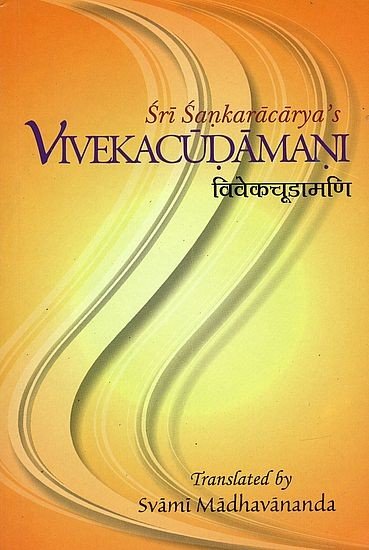Vivekachudamani
by Shankara | 1921 | 49,785 words | ISBN-13: 9788175051065
The Vivekachudamani is a collection of poetical couplets authored by Shankara around the eighth century. The philosophical school this compilation attempts to expose is called ‘Advaita Vedanta’, or non-dualism, one of the classical orthodox philosophies of Hinduism. The book teaches Viveka: discrimination between the real and the unreal. Shankara d...
Verse 549
अहिर्निर्ल्वयनीं वायं मुक्त्वा देहं तु तिष्ठति ।
इतस्ततश्चाल्यमानो यत्किंचित्प्राणवायुना ॥ ५४९ ॥ahirnirlvayanīṃ vāyaṃ muktvā dehaṃ tu tiṣṭhati |
itastataścālyamāno yatkiṃcitprāṇavāyunā || 549 ||549. In reality, however, he rests discarding the body, like the snake its slough; and the body is moved hither and thither by the force of the Prāṇa, just as it listeth.
Notes:
[Discarding the body—ceasing to identify himself with the body.
Like the snake etc.—A reminiscence of Brihada-ranyaka IV. iv. 7.
Wind—‘Vayu,’ which strictly speaking means ‘force.’ in which sense Pranas can be called ‘Vayu.’ There is another reading to the first line, “ahinirtva-
yanīvāyaṃ muktadehastu niṣṭhati”—which should be rendered thus “But the body of the liberated man remain* like the slough of a snake. ]
